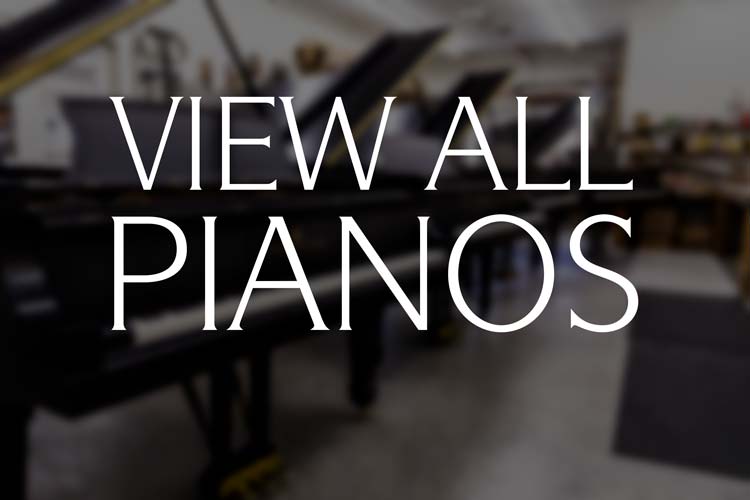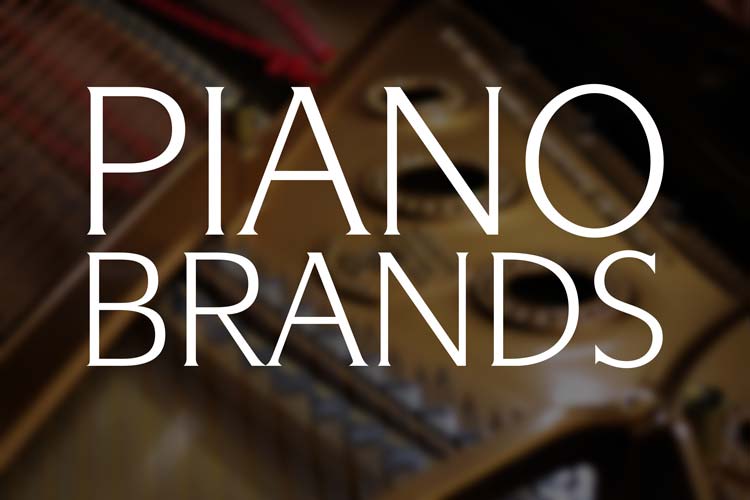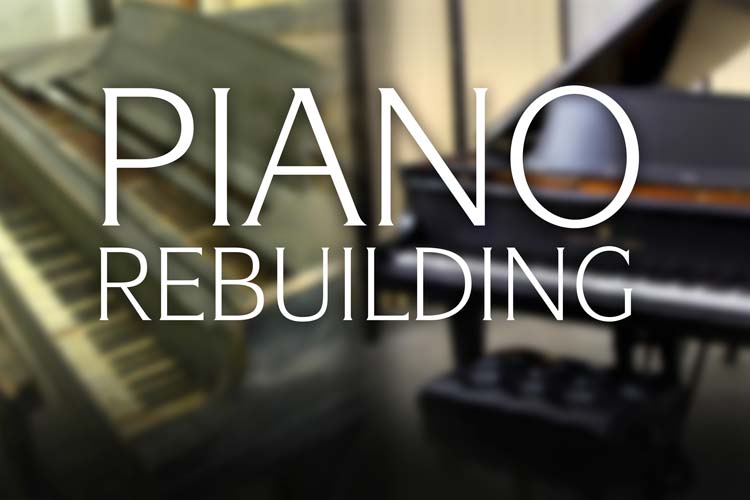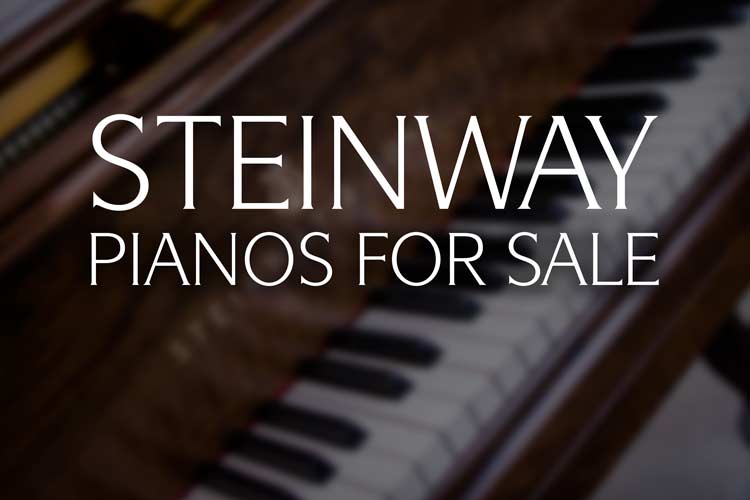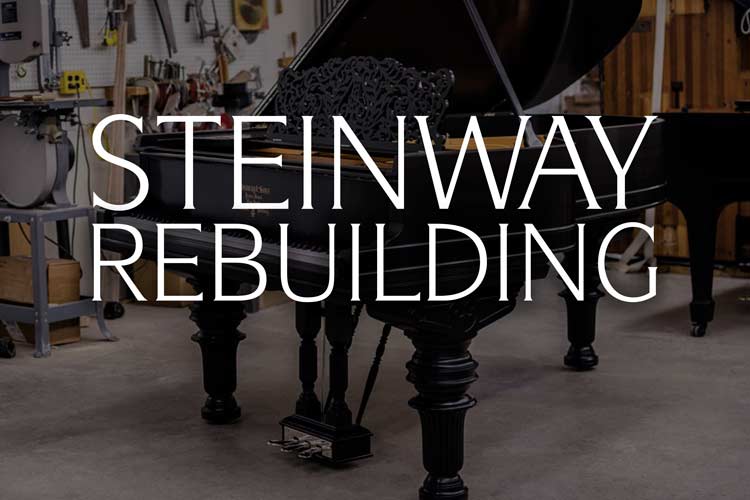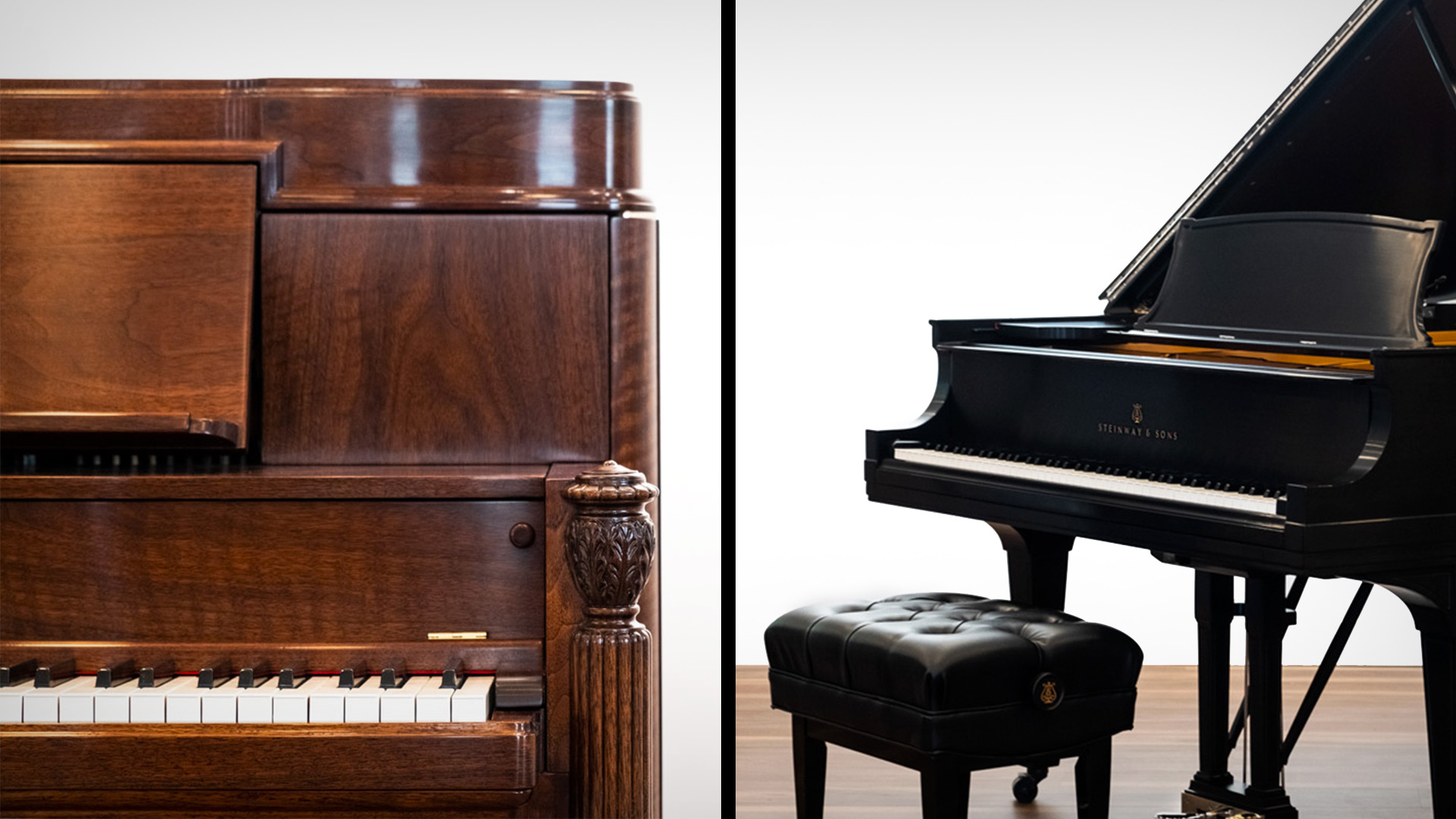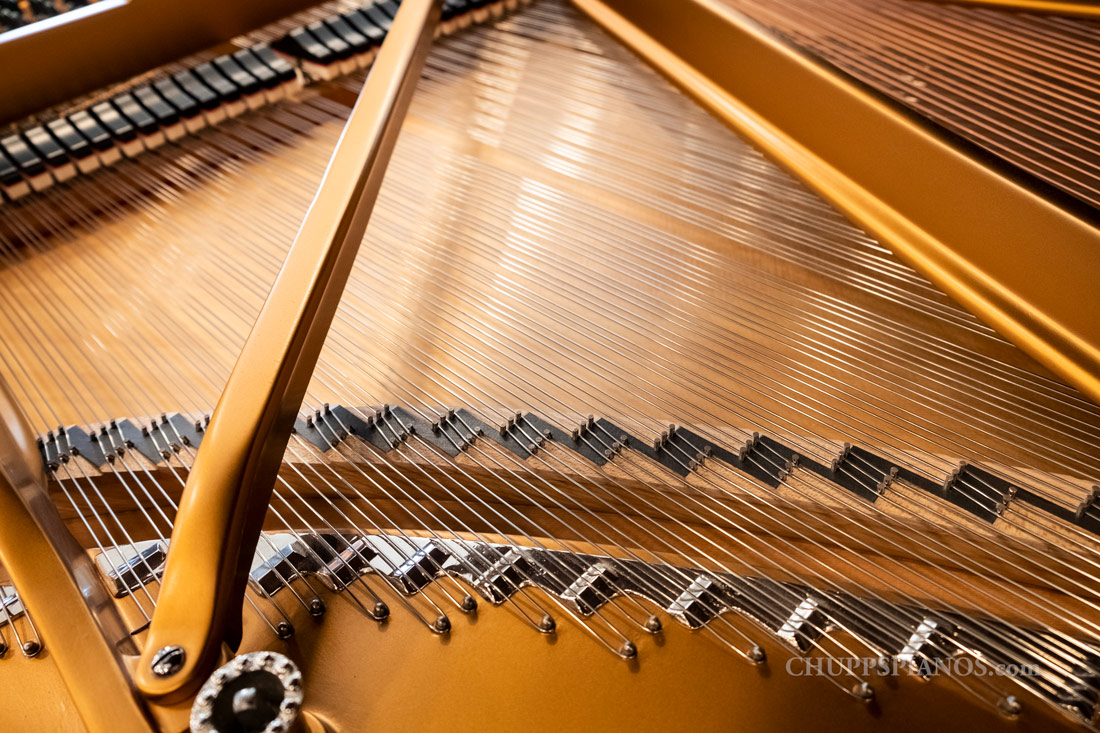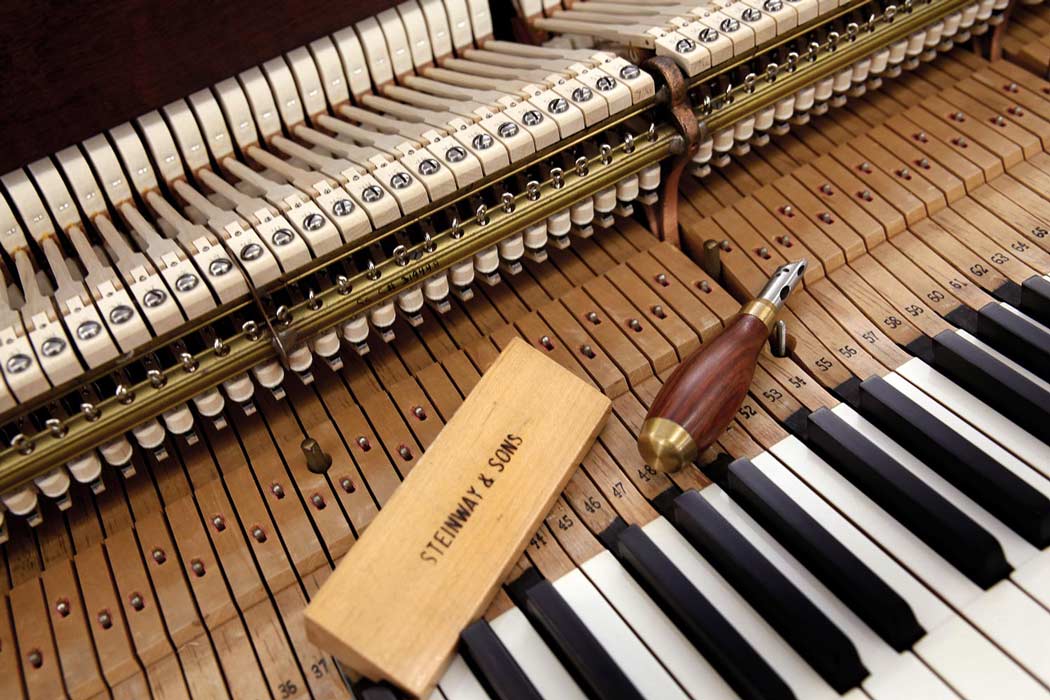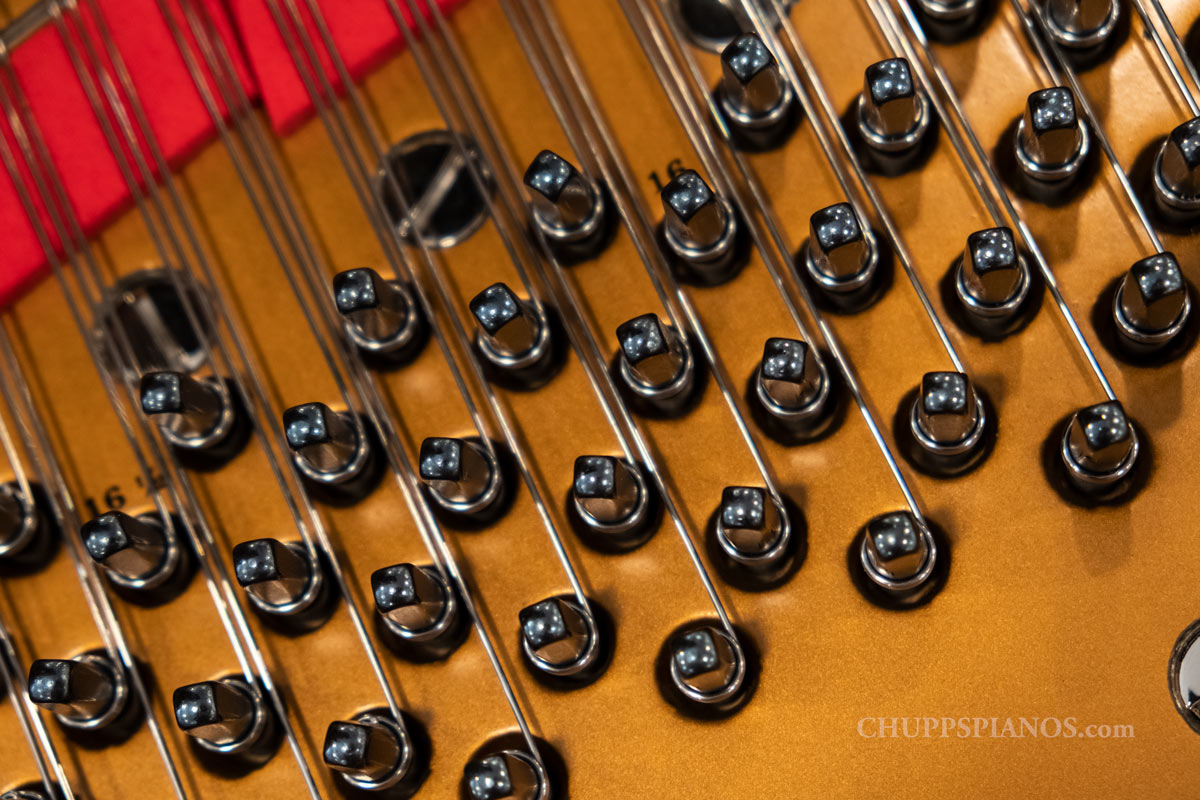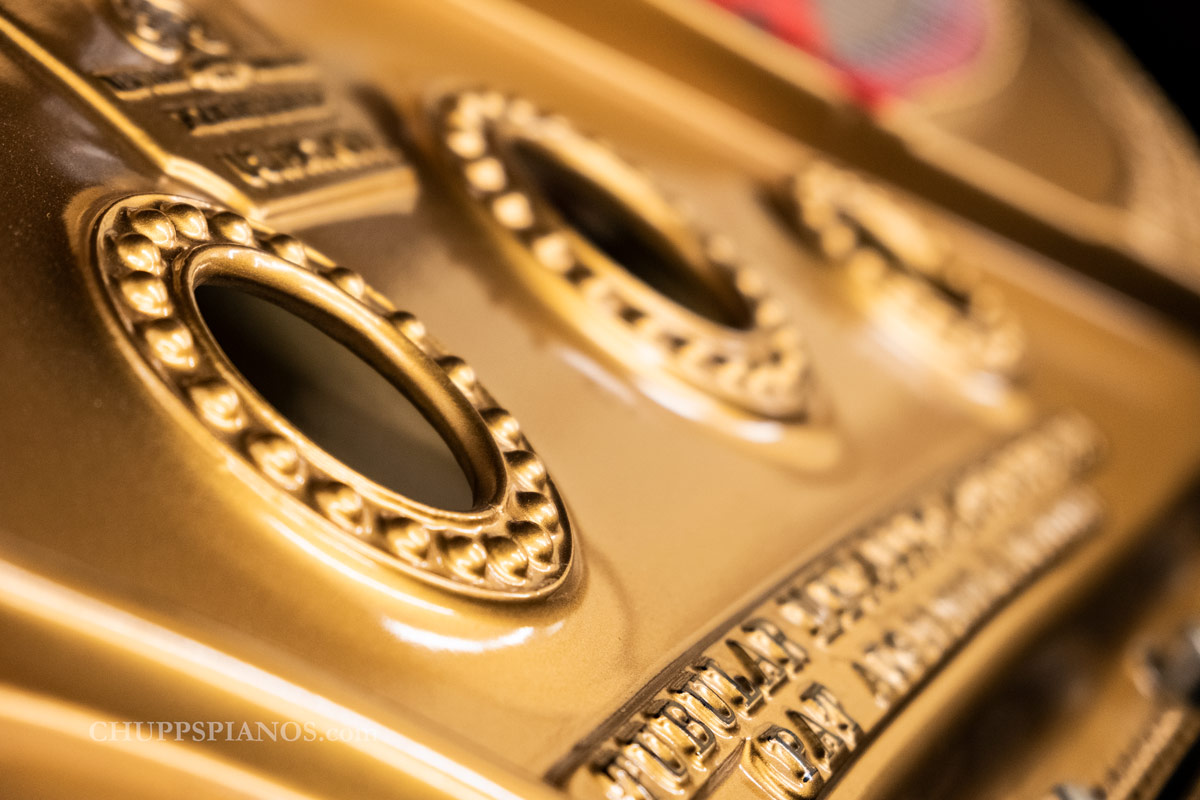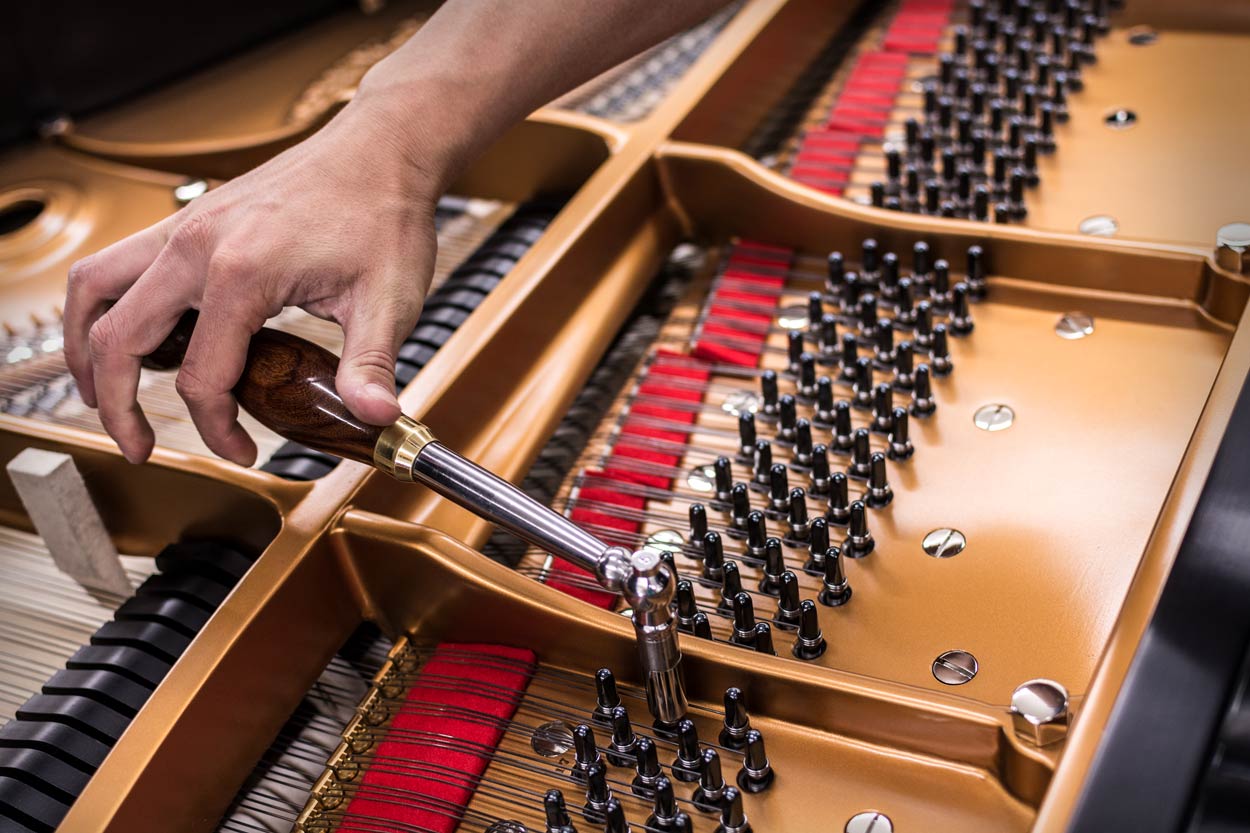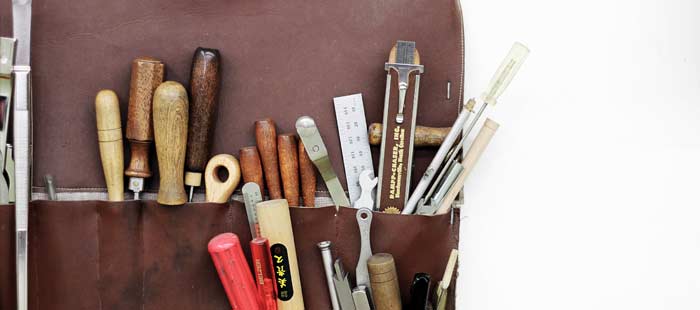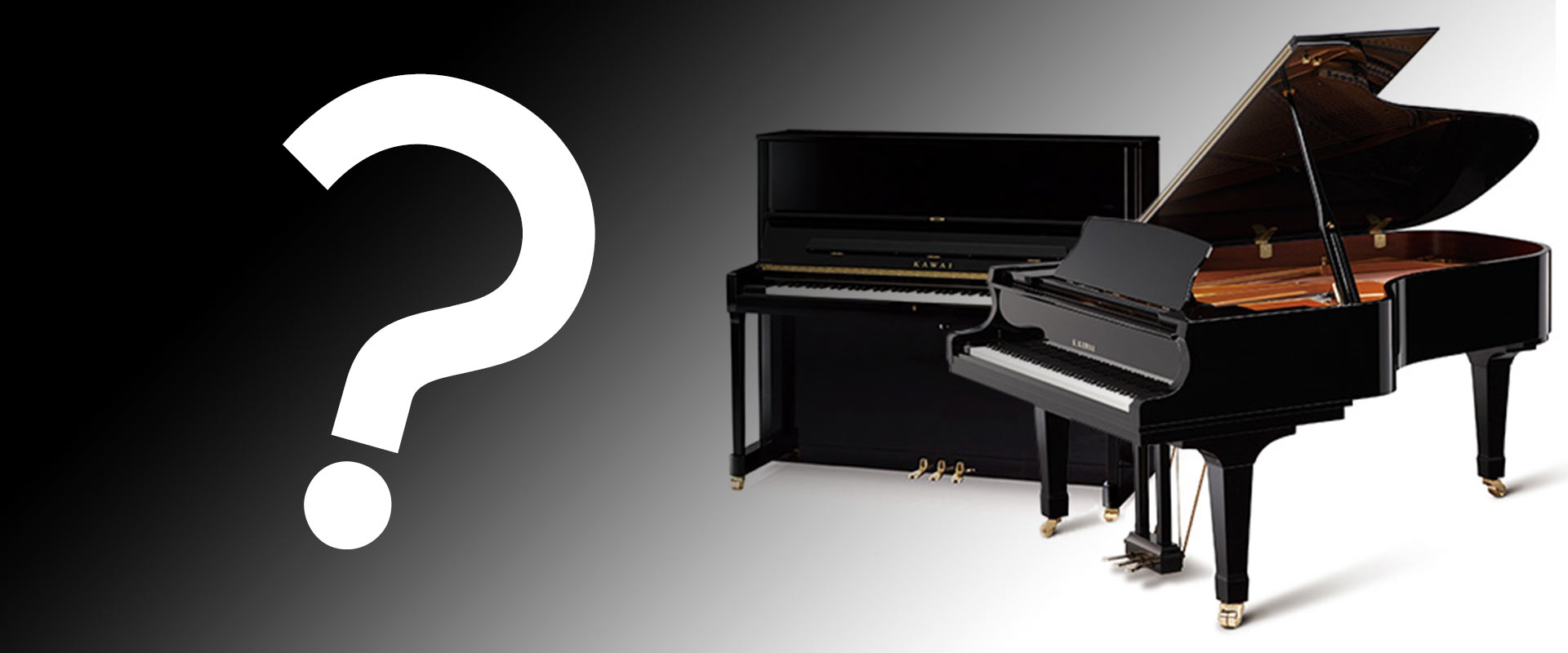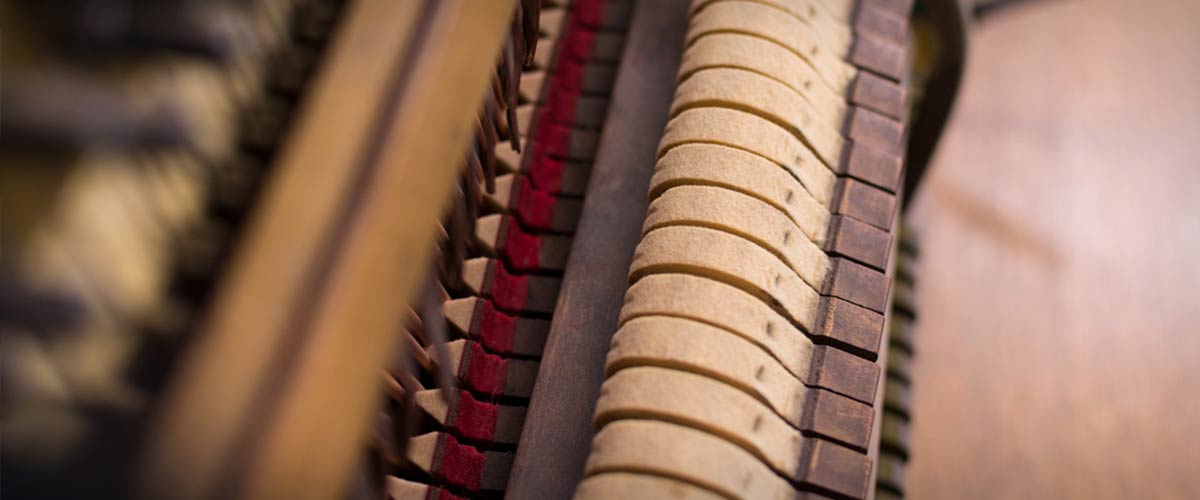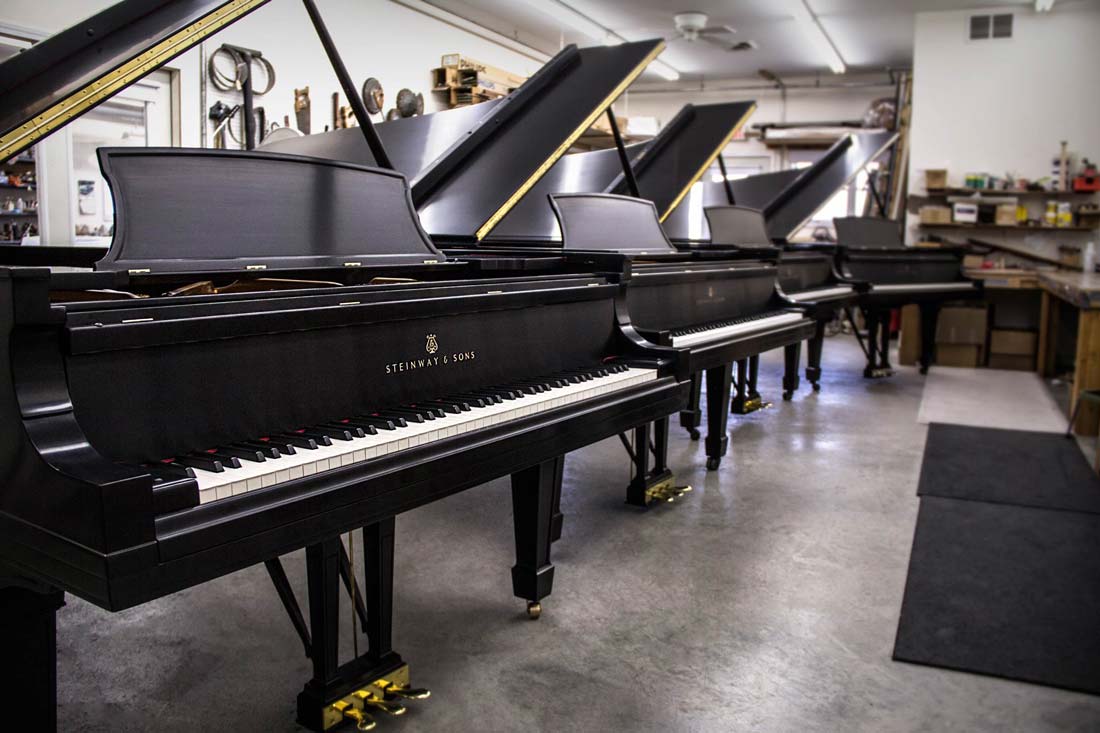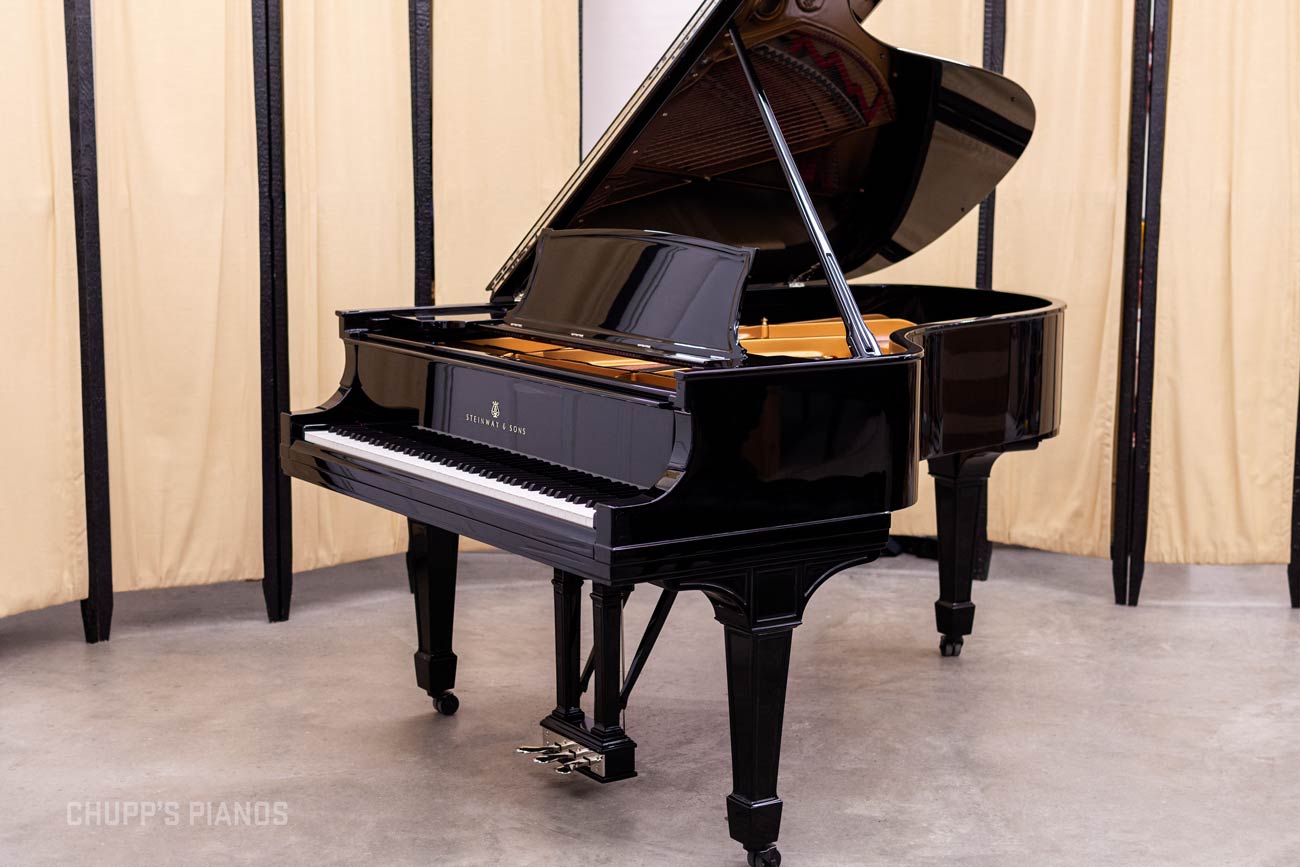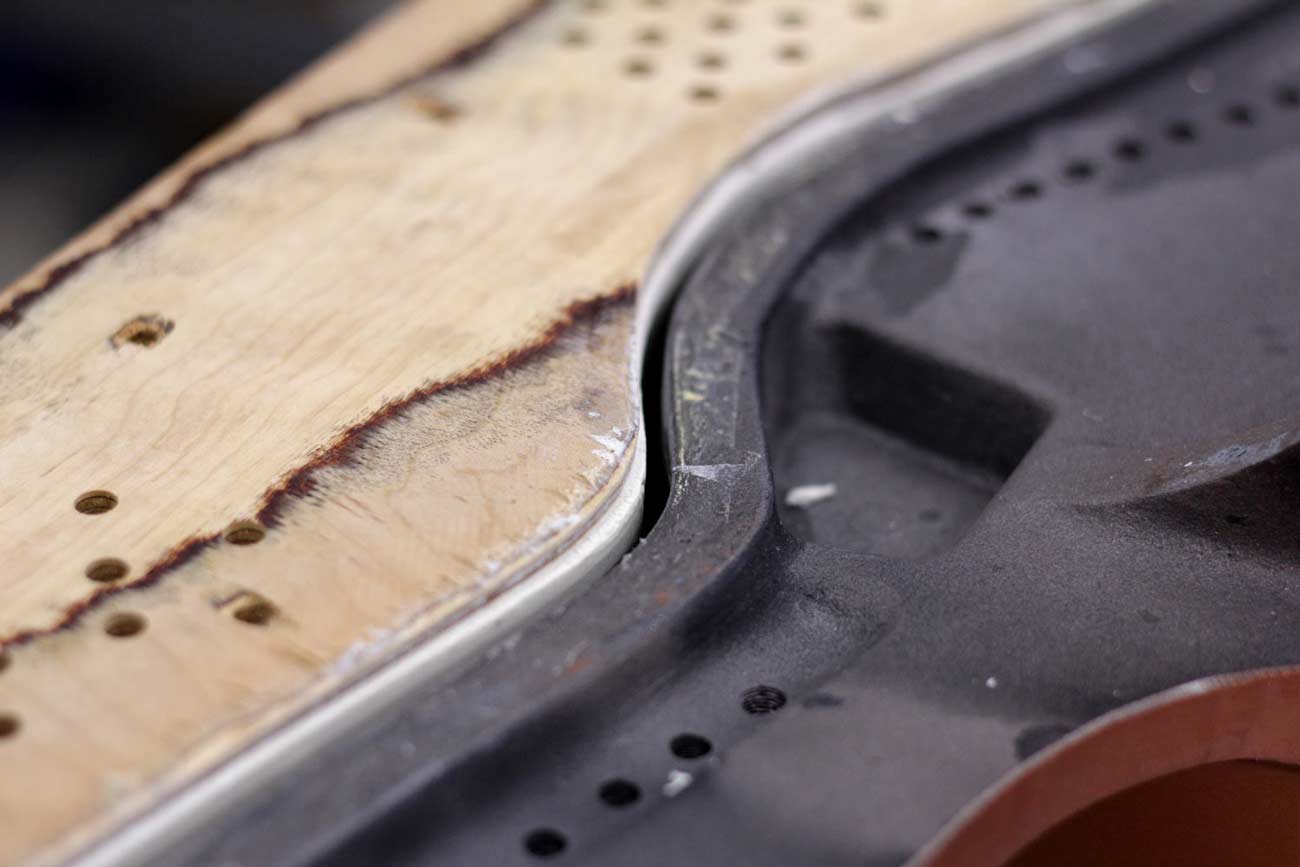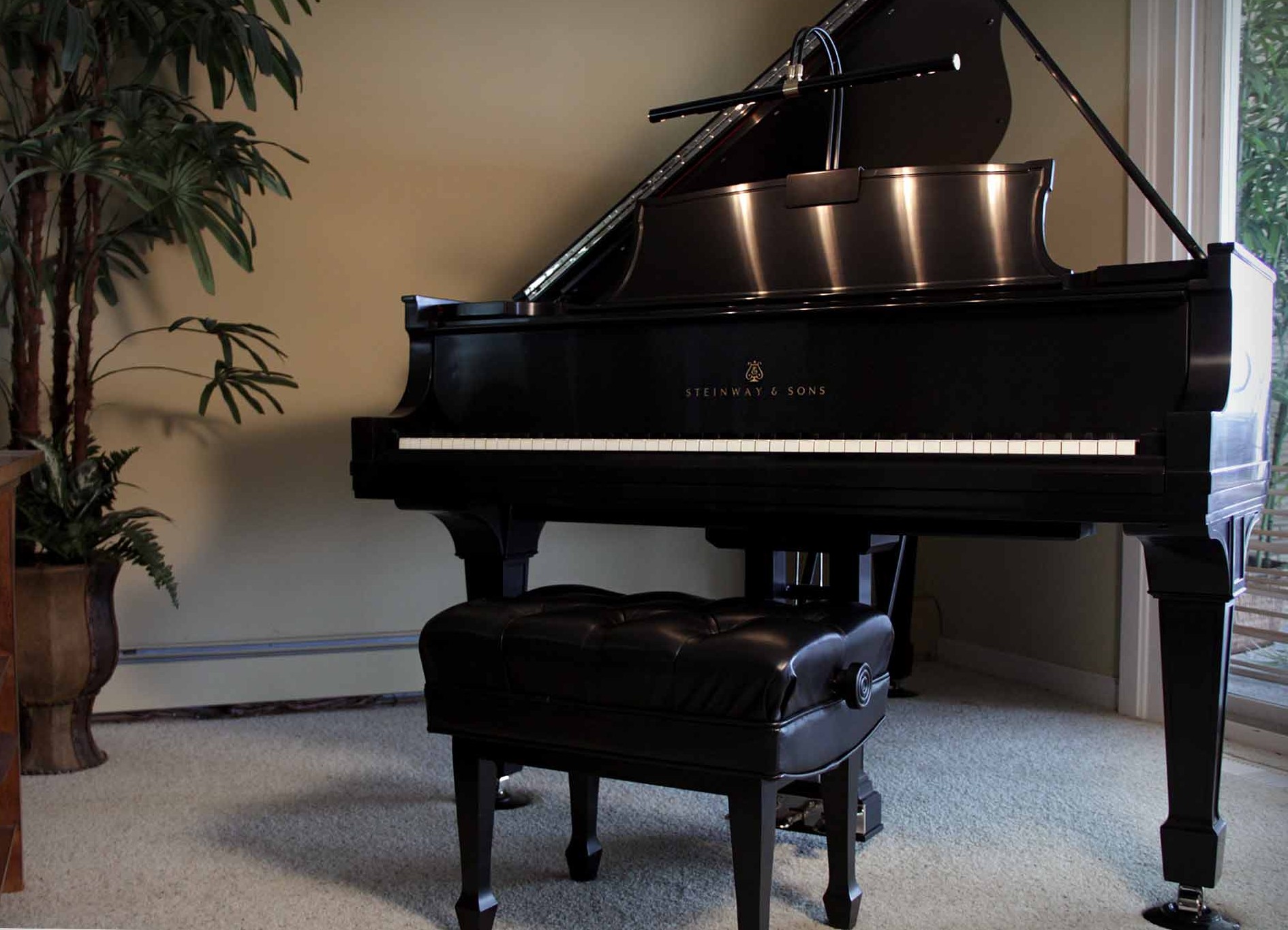What’s the Difference Between an Upright or Grand Piano & Other Frequently Asked Questions
When History is Played Personal – A Few Things to Consider When Restoring The Family Piano
Time To Tune! Why Getting Your Piano Tuned in the Fall (and or Spring) is a Good Idea!
In Tune With The Seasons - Piano Tuning by Chupp's Piano Service
Fall is in the air. The air is a bit chillier, hot cider is back on the menu, Thanksgiving plans are being worked out... and it's time to have your piano tuned. For many pianists and piano owners, getting their acoustic piano tuned in the Spring and then again in the Fall is akin to a family tradition. But why is that the case? This quick blog article covers why this musical habit is one you may want to place in your toolbox.Why Should I Buy A Bigger Grand Piano & Other Frequently Asked Questions
Why should you consider springing for a larger piano? What do the pedals on a Steinway piano do? What about a 'free' upright piano? In today’s blog post, we cover a few of the piano-related questions we receive here at Chupp’s Piano Service.
What Is The Benefit of a Large Grand Piano?
Besides the amazing focal point that a large grand piano can give any room, there are a number of benefits that come with the purchase and use of a large grand piano over their smaller cousins. The first benefit you may notice when you begin to play is the superior level of control many large concert grands provide. Much of this can be traced back to the longer key sticks. What is a piano keystick? Traditionally crafted from a premium pine or spruce, the long wooden keys are capped with a keytop. (It is important to note that a piano key extends in length far beyond the small part at the front that is touched by the pianist.) Pianos of yesteryear boasted keytops of genuine ivory and ebony. Today, the most common materials are high-grade plastics and polymers. These materials are more environmentally friendly and less prone to cracking or yellowing. The larger key bed and action cavity space in a concert grand gives enough room for the length of the keys to be extended to their optimum length. The longer piano keys allow for greater precision and control over each note.Why Do Pianos Go Out of Tune?
Why Pianos Slip Out of Tune
A piano is made up of thousands of individual parts. A dizzying number of components constructed of wood, metal, and cloth all combine to create one musical instrument. In one way, all acoustic pianos are equal - they require tuning. Today, the standard pitch to which pianos are tuned is A440. Here are some of the reasons your piano will slip out of tune.Question: Why do pianos go out of tune? What has the greatest affect on my piano's tuning stability?
- Humidity Swings: The biggest factor that affects a piano's stability of tuning are swings in humidity. Traditionally, a piano's pinblock, soundboard and bridges are all made of wood. Wood can be very susceptible to swings in humidity which cause the wood to expand and contract. Constant swelling and shrinking combined with the thousands of pounds of tension created by the strings, causes the piano to quickly slip out of tune.
- Maintaining Consistency: A humidity range between 40% and 50% is optimal for your acoustic piano. The best solution is to maintain a constant humidity level in your home by using a whole house or room humidification control system. We also highly recommend the use of a Dampp Chaser Piano Life Saver System installed on the instrument to help create a stable 'microenvironment' around and inside the piano. These systems are available for both upright and grand pianos.
How Much Does a Piano Weigh & Other Frequently Asked Questions
How much does a piano weigh?
The combination of thick pieces of lumber, the heavy cast iron plate (sometimes called a harp), and numerous other components make the piano one of the heaviest instruments on the market today. Pianos vary greatly in weight depending on their type and size. For example, a Steinway & Sons Model B which measures 6’11” in length weighs approx. 750 lbs. while smaller upright pianos such as consoles and spinets, usually weigh in the 300 to 500 lbs range.A Deal, or a ‘Steal’? – Choosing an Upright or Grand Piano for your Student
Question: My child is starting piano lessons. What kind of piano should I get for them? I found a free one on Craigslist and most of the keys still work. Could I start them on this piano until they get good enough to deserve a better one?
The selection of an instrument for your budding student is an important one. Students of the piano will spend many an hour practicing scales and building up to ever increasingly difficult pieces. A link should build between the artist and their instrument. This is why it is critical to select a piano that encourages them to sit down and play.
 Holding Your Student Back…
Holding Your Student Back…
Imagine someone beginning to learn a sport, say, baseball. One wouldn’t give the budding player a stick broken off from a nearby tree and tell them; ‘learn with this, and when you get really good we’ll give you a real bat!’ It is obvious that this would not be conducive to enjoyable learning and would impede progress. One would be tempted to simply quit when placed under this handicap.
Unfortunately, we see this far too often in the world of pianos. The difference between a fully functional, professional grade piano and the ‘Craigslist deals’ and cheap keyboards one often sees in us for practice is like day and night. Even budding pianists can tell the difference, even if they cannot express what exactly they are feeling.
Creating Frustration
Young students are much more perceptive to tonal quality and touch than many parents think. Many of the ‘free deals’ that can be found on Craigslist (and yes, even at some piano dealers) can be much more trouble than they are worth. A badly built and maintained piano may require much more repair and restoration work than is initially noticeable when examining the exterior. It is always recommended that you contact a qualified piano technician prior to considering the purchase of one of these used pianos. It can be incredibly frustrating to sit down at a barely functioning piano that has been badly maintained and attempt to bring some kind of discernable melody out of it. It is maddening for the professional; just imagine how frustrating it is for a beginning student. Sadly, we see this so often. It is no wonder that many students fail to stick with piano lessons. In terms of monetary value, a durable, high-performance instrument can and will help you and your student get the very most out of piano/music lessons. A well-built, properly maintained instrument will stay in regulation and in tune saving you money in service calls. Many music teachers also have minimum requirements for the student’s practice instrument – and with good reason!Kawai Vs. Yamaha Pianos
Which Piano is Right for You: Yamaha Vs. Kawai?
Question: “I am considering both Yamaha and Kawai pianos and they seem similar. What are some of the differences?"
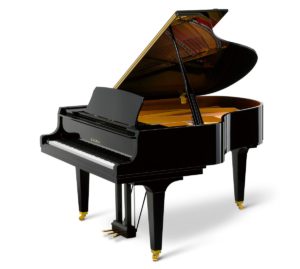 Yamaha pianos are often near the top of the list when pianists begin looking for a good piano. If you are looking at the purchase of a new Yamaha piano, the consideration of a piano manufactured by Kawai may be in your best interest. Founded in 1927 by Koichi Kawai, Kawai endured ninety years of history to become one of the leading piano makers in the world. They continue to produce high-quality pianos at a price point that is hard to beat—even for Yamaha.
Kawai and Yamaha pianos are often compared due to a number of similarities. They are both based in Japan and have decades of experience in the crafting of both upright and grand pianos. Their factories are some of the most advanced in the world and they pride themselves on consistency. Both of the companies build an incredibly high number of pianos each year. This high production capacity combined with truly good quality has made both brands the choice of musicians, students and piano lovers around the globe. That being said, Kawai has some significant advantages over Yamaha pianos, which has allowed them to be the leader of innovation in the piano industry while maintaining competitive pricing for their high-quality pianos. So what separates Kawai pianos from Yamaha pianos?
Yamaha pianos are often near the top of the list when pianists begin looking for a good piano. If you are looking at the purchase of a new Yamaha piano, the consideration of a piano manufactured by Kawai may be in your best interest. Founded in 1927 by Koichi Kawai, Kawai endured ninety years of history to become one of the leading piano makers in the world. They continue to produce high-quality pianos at a price point that is hard to beat—even for Yamaha.
Kawai and Yamaha pianos are often compared due to a number of similarities. They are both based in Japan and have decades of experience in the crafting of both upright and grand pianos. Their factories are some of the most advanced in the world and they pride themselves on consistency. Both of the companies build an incredibly high number of pianos each year. This high production capacity combined with truly good quality has made both brands the choice of musicians, students and piano lovers around the globe. That being said, Kawai has some significant advantages over Yamaha pianos, which has allowed them to be the leader of innovation in the piano industry while maintaining competitive pricing for their high-quality pianos. So what separates Kawai pianos from Yamaha pianos?
1: Higher Stability
Kawai pianos, especially their grand pianos, have undergone steady and constant improvements in their design and workmanship over the years. Today, Kawai pianos come standard with their industry leading Millennium III ABS-Carbon Fiber action. Several decades ago, Kawai made the bold decision to begin the production of piano action components utilizing ABS-Styran. This change from wood was shocking to the traditional piano industry and initially was widely dismissed. The years since have proven the stability and accuracy of their new parts, which today, are widely accepted and credited by the piano industry. In fact, America's Mason & Hamlin through their subsidiary Wessel, Nickel and Gross have recently switched to similar, ABS components with raving reviews. Currently, the new Millennium III action parts are made of ABS infused with Carbon Fiber for added strength and rigidity. These actions are utilized on both Kawai grand and upright pianos.There Ain’t No Such Thing As a Free Old Upright Piano (Most of the Time)
Why A ‘Free’ Upright Piano Is Not Always Free
“Free piano! Plays great! *just needs tuned. You move. Bring lots of friends, this thing is heavy...”Ads similar to this example, fill newspapers and local Craigslist listings all over the country. At first, this can sound like a deal of a lifetime. “A free vintage piano and all I need to do is pick it up and have tuned!” Unfortunately, these apparent deals can quickly turn into money pits that leave you with a lackluster, barely functioning instrument that cannot be improved without an inordinate amount of time and money. There are a few reasons that these pianos are often left in homes when they are sold and you can find free pianos abound on the internet. Below we will go over a the top reasons you should think twice before undertaking the inconvenience of acquiring a free/cheap piano.
1: Moving Cost
There are a number of hidden costs that might not be apparent when it comes to a free or cheap one-hundred-year-old upright or even a grand. The first is moving. Old, full-size upright pianos can weigh nearly 700 lbs. and are harder to move than a grand. Awkward in size and weight, these instruments require a qualified piano moving team to safely remove, transport and set up the piano at its new home. Asking a couple of buddies to help you move it will not suffice, and likely will cause more damage to the piano and potential injury to those attempting to move it.Why Buy A Restored Steinway Piano?
Top 3 Reasons Why You Should Purchase a Restored Steinway Grand Piano
Question: “I have read a lot about vintage Steinways vs. new. Why should I consider purchasing a restored Steinway over a new one?"
Here at Chupp’s Pianos, we often receive questions related to the differences between new and restored Steinway & Sons Pianos. After talking to our clients about the benefits and drawbacks of each type of piano, these conversations often lead up to the ultimate question: “Should I buy a new Steinway, or a vintage restored Steinway piano?” At the end of the day, we often find that finding a second home to a restored piano is the best way to go. Restored pianos are excellent musical investments that are often superior to brand new pianos. The workmanship during the 'golden era' of piano manufacturing was truly standard setting. Below you’ll find the top 3 reasons considering a restored Steinway & Sons piano might be in your best interest over a new one.
Top 5 Tips for Selling Your Piano Yourself
Some quick tips for selling your piano:
We have many people contacting us asking if we are interested in purchasing their piano from them. In many cases, we are! If it is a Steinway, Mason & Hamlin, Baldwin, Yamaha or other brand of comparable quality, we would be very interested in taking a look. We regularly purchase pianos from across the country in varying states of condition. However with the hundreds of piano manufacturers that have existed throughout history, there are some cases where you are best attempting to sell the piano directly yourself. Here are some quick tips that might help you in that process! 1: Prep the Piano and take good photos! Have your piano tuned! Dust the piano and make sure it is looking its best. Remove anything you have sitting on your piano that will distract from the instrument. Having several family pictures sitting on the instrument might not be best for sales! Make sure there is enough light to show the piano off in an attractive way. Blurry and dark photographs don't give the best impression, so make sure to take a bit of extra care before posting/sending photos of your for sale piano.The Steinway Model A-1 vs. A-2 vs. A-3
The Steinway Model A Family | What's the Difference?
Question: “I was looking at Steinway Model A pianos and noticed that there are pianos labeled Model A-1, A-2 and A-3 and it is getting a bit confusing. What is the difference between these models of Steinway pianos?
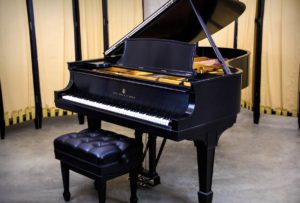
The First Model A Grand Piano | 1878
The Model A family of pianos consists of several 6' variants in Steinway's line of grand pianos. The A-1, A-2 and A-3 are all in the same family, yet there are some distinct differences, and even differences within those models. Steinway & Sons was founded in 1853 and the first Model A, the A-1 was first introduced back in 1878. This piano measured 6’ in length. This piano was an 85 note piano and the scale design was scaled down from the larger Model B. When first introduced the Model A was actually the smallest of all of the grand pianos built and sold by Steinway. (This was before the introduction of the Models S, O, L or M.) The scale design was crafted by C.F. Theodore Steinway, an innovative man credited with many of the patents and technical advances introduced by Steinway in their early days of operation. This model was fairly historic in terms of innovation and introduced the bent-rim case construction, which allowed for a better transfer of soundboard vibrations, a technique still in use today.Young Chang Pinblock Problems – How We Fix It
Should I buy an Upright or Grand Piano?
Which style of piano is right for you?
Upright vs. Grand piano, that is the question. Or at least one question that we hear often. Buying an instrument, especially one as large as a piano is a decision that shouldn’t be made in a snap. And deciding which style of piano to go with is one of the first steps in choosing the instrument that is right for you and your lifestyle. The last thing you want is to run out and buy an instrument that simply will not work with what you need and where you live. So here are a few things to look at when deciding which direction to go.…

